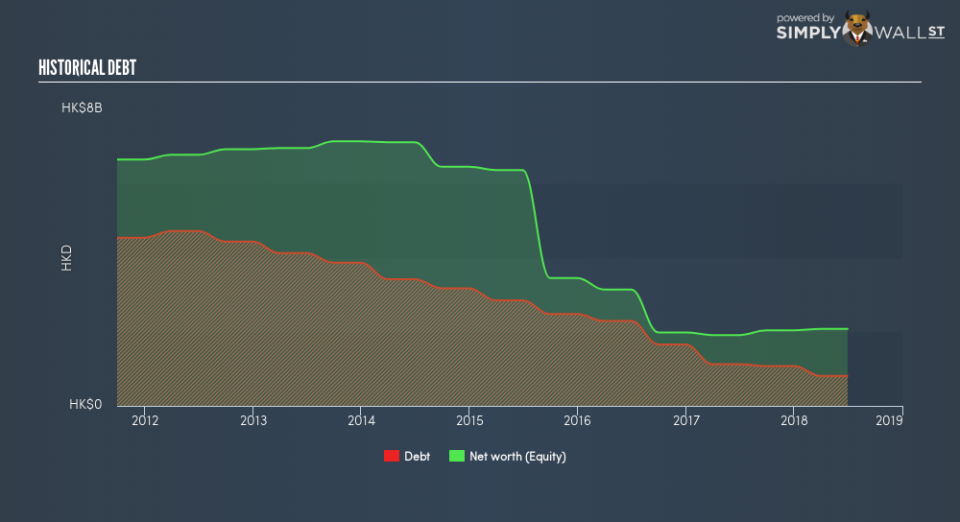How Financially Strong Is Jinhui Holdings Company Limited (HKG:137)?

Jinhui Holdings Company Limited (HKG:137) is a small-cap stock with a market capitalization of HK$551.5m. While investors primarily focus on the growth potential and competitive landscape of the small-cap companies, they end up ignoring a key aspect, which could be the biggest threat to its existence: its financial health. Why is it important? Assessing first and foremost the financial health is crucial, as mismanagement of capital can lead to bankruptcies, which occur at a higher rate for small-caps. I believe these basic checks tell most of the story you need to know. Nevertheless, I know these factors are very high-level, so I’d encourage you to dig deeper yourself into 137 here.
Does 137 produce enough cash relative to debt?
137 has shrunken its total debt levels in the last twelve months, from HK$1.13b to HK$810.2m , which comprises of short- and long-term debt. With this reduction in debt, the current cash and short-term investment levels stands at HK$485.5m for investing into the business. On top of this, 137 has produced HK$321.7m in operating cash flow in the last twelve months, resulting in an operating cash to total debt ratio of 39.7%, meaning that 137’s debt is appropriately covered by operating cash. This ratio can also be interpreted as a measure of efficiency as an alternative to return on assets. In 137’s case, it is able to generate 0.4x cash from its debt capital.
Does 137’s liquid assets cover its short-term commitments?
Looking at 137’s most recent HK$587.1m liabilities, it seems that the business has maintained a safe level of current assets to meet its obligations, with the current ratio last standing at 1.14x. Usually, for Shipping companies, this is a suitable ratio as there’s enough of a cash buffer without holding too capital in low return investments.
Can 137 service its debt comfortably?
With a debt-to-equity ratio of 39.0%, 137’s debt level may be seen as prudent. This range is considered safe as 137 is not taking on too much debt obligation, which can be restrictive and risky for equity-holders. We can check to see whether 137 is able to meet its debt obligations by looking at the net interest coverage ratio. A company generating earnings before interest and tax (EBIT) at least three times its net interest payments is considered financially sound. In 137’s, case, the ratio of 1.66x suggests that interest is not strongly covered, which means that debtors may be less inclined to loan the company more money, reducing its headroom for growth through debt.
Next Steps:
137’s high cash coverage and appropriate debt levels indicate its ability to utilise its borrowings efficiently in order to generate ample cash flow. In addition to this, the company exhibits an ability to meet its near term obligations should an adverse event occur. I admit this is a fairly basic analysis for 137’s financial health. Other important fundamentals need to be considered alongside. I suggest you continue to research Jinhui Holdings to get a better picture of the stock by looking at:
Valuation: What is 137 worth today? Is the stock undervalued, even when its growth outlook is factored into its intrinsic value? The intrinsic value infographic in our free research report helps visualize whether 137 is currently mispriced by the market.
Historical Performance: What has 137’s returns been like over the past? Go into more detail in the past track record analysis and take a look at the free visual representations of our analysis for more clarity.
Other High-Performing Stocks: Are there other stocks that provide better prospects with proven track records? Explore our free list of these great stocks here.
To help readers see past the short term volatility of the financial market, we aim to bring you a long-term focused research analysis purely driven by fundamental data. Note that our analysis does not factor in the latest price-sensitive company announcements.
The author is an independent contributor and at the time of publication had no position in the stocks mentioned. For errors that warrant correction please contact the editor at editorial-team@simplywallst.com.

